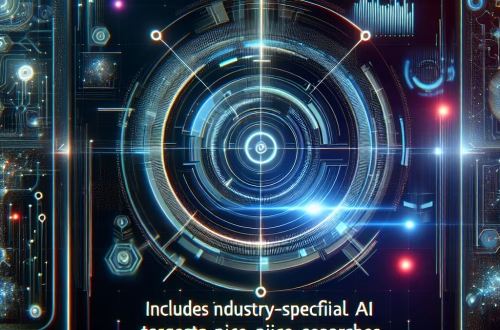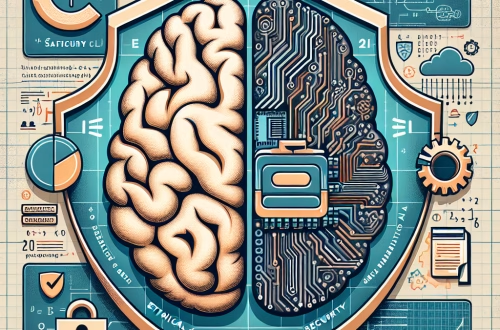AI Camera Apps for Photo Enhancement
Summary:
AI camera apps leverage machine learning to automatically enhance photos, making professional-grade editing accessible to novices. These tools analyze images to adjust lighting, color, sharpness, and even remove unwanted objects with minimal user input. For beginners in the AI industry, understanding these apps provides insight into practical applications of neural networks, computer vision, and generative AI in everyday technology. This article explores how these apps work, their benefits, limitations, and ethical implications—empowering users to navigate this rapidly evolving landscape.
What This Means for You:
- Democratized Photo Editing: AI camera apps eliminate the need for technical skills in tools like Photoshop. You can achieve polished results with one tap, perfect for social media or personal archives.
- Boosted Social Media Presence: Consistently high-quality visuals increase engagement. Use apps like Lensa or Adobe Lightroom Mobile for AI-powered presets tailored to platforms like Instagram or TikTok.
- Cost-Efficiency Over Professional Tools: Free or low-cost apps like Remini or Pixelcut offer advanced features (e.g., noise reduction, background replacement) without subscription fees, ideal for hobbyists or small businesses.
- Future Outlook or Warning: As AI enhancements become hyper-realistic, users must verify manipulated content to avoid spreading misinformation. Additionally, scrutinize app permissions—some collect biometric data for facial recognition features, risking privacy breaches.
AI Camera Apps for Photo Enhancement
Understanding AI-Powered Photo Enhancement
AI camera apps use deep learning models, such as convolutional neural networks (CNNs) and generative adversarial networks (GANs), to analyze and modify images. Unlike traditional editors, these apps process photos holistically—recognizing subjects, backgrounds, and textures—to apply context-aware adjustments. For example, Portrait Mode in apps like Google Pixel’s camera uses semantic segmentation to isolate subjects and blur backgrounds realistically.
Core Technologies Behind the Scenes
Common techniques include:
- Auto-Enhancement Algorithms: Adjust exposure, contrast, and saturation based on learned preferences from millions of images.
- Super-Resolution: Upscale low-quality images using GANs (e.g., Topaz Labs’ Gigapixel AI).
- Noise Reduction: Remove grain from low-light photos via models trained on clean/noisy image pairs.
Best Uses for AI Camera Apps
Everyday Photography: Apps like Snapseed or PicsArt auto-correct lighting imbalances in smartphone photos.
Low-Light Enhancement: Nightography modes on Samsung Galaxy or iPhone use multi-frame fusion for brighter, clearer images.
Portrait Perfection: Tools like FaceApp apply AI-driven skin smoothing, teeth whitening, and virtual makeup.
Strengths: Why AI Dominates Traditional Editing
- Speed: Processes edits in seconds versus manual hours.
- Consistency: Batch-editing features maintain uniform style across galleries.
- Accessibility: Intuitive interfaces require no prior editing knowledge.
Weaknesses and Limitations
- Overprocessing Risks: Excessive smoothing or HDR can create unnatural “plastic” skin textures.
- Loss of Authenticity: Aggressive edits may erase cultural or personal nuances (e.g., skin tone inaccuracies).
- Hardware Dependency: Real-time features like 4K video enhancement drain battery life and require high-end GPUs.
Ethical and Creative Considerations
AI apps can perpetuate biases—favoring Eurocentric beauty standards or removing scars/birthmarks by default. Users should customize settings rather than relying on auto-modes. For creative control, hybrid tools like Luminar Neo combine AI automation with manual sliders.
The Road Ahead: Emerging Trends
Expect tighter integration with augmented reality (e.g., virtual try-ons) and AI-generated art features. However, watermarking AI-edited content may soon become mandatory to combat deepfakes.
People Also Ask About:
- How do AI camera apps enhance photos differently than filters?
AI apps use neural networks to analyze image content and make targeted adjustments (e.g., brightening faces while balancing backgrounds). Filters apply uniform changes regardless of context. - Can AI apps replace professional photo editors?
While they excel at efficiency for casual use, complex tasks like commercial retouching still require human nuance and Adobe Photoshop expertise. - Are free AI photo apps safe to use?
Check privacy policies—apps with unclear data usage may sell images to train AI models. Stick to reputable brands like Adobe or Google. - Why do some AI-edited photos look unnatural?
Overfitting in training data can cause artifacts or unrealistic details. Adjust intensity sliders to moderate effects.
Expert Opinion:
AI camera apps democratize photo editing but require mindful usage. Users should prioritize apps with transparent AI training practices to avoid biased outputs. The rise of generative AI in photography blurs lines between reality and fabrication, necessitating digital literacy. Future regulations may enforce disclosure for AI-altered images in media—proactively verifying content sources is crucial.
Extra Information:
- GANs for Image Enhancement (Research Paper): Explains generative adversarial networks in photo editing—key for understanding app capabilities.
- FTC Guide on App Privacy: Helps users evaluate AI camera apps’ data safety claims.
- DPReview AI Tools Comparison: Reviews performance of leading apps like DxO PureRaw and Skylum Luminar.
Related Key Terms:
- best AI photo editor apps for smartphones
- AI-powered portrait enhancement techniques
- privacy risks in free AI camera apps
- how machine learning improves low-light photography
- ethical AI photo editing practices
- comparison of GAN-based vs. traditional photo enhancers
- top AI tools for real-time video enhancement
Check out our AI Model Comparison Tool here: AI Model Comparison Tool
*Featured image provided by Pixabay





